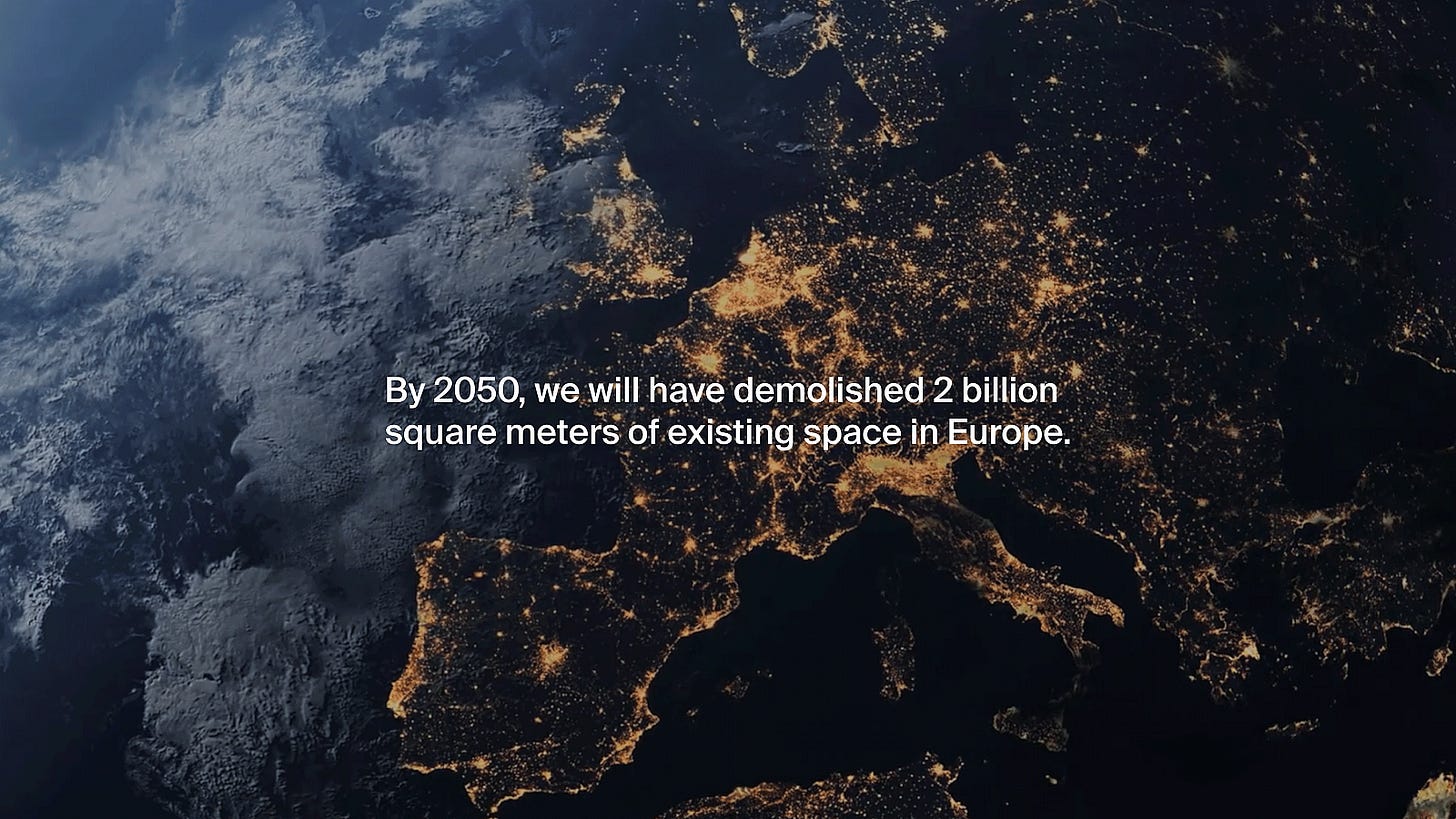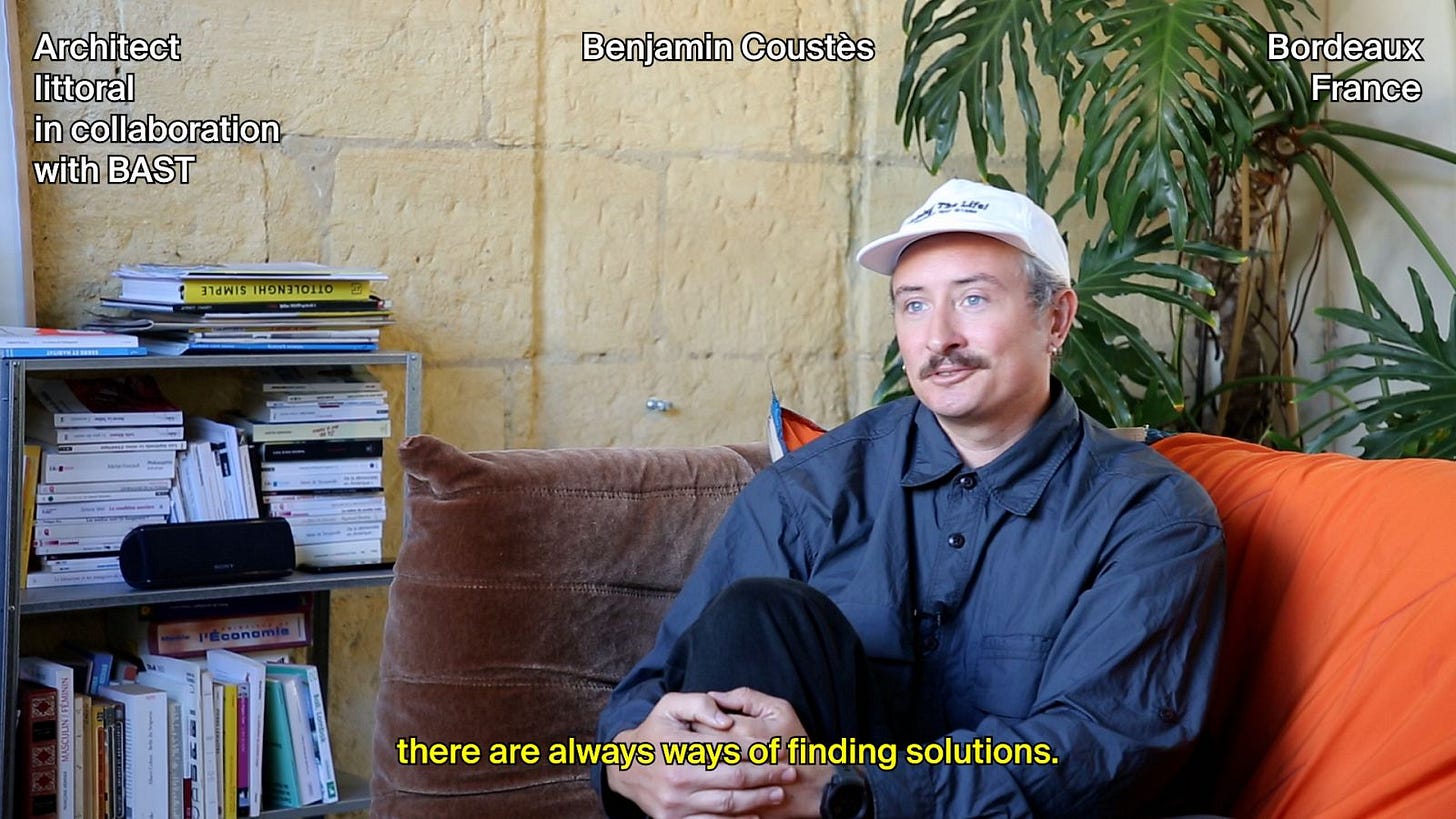Join HouseEurope! A Right! to Reuse
Because the demolition of existing buildings is as outdated as food waste, animal testing and single-use plastics.
The European Citizens’ Initiative HouseEurope! advocates for a “right to reuse” existing structures. By collecting 1 million signatures across seven countries, the initiative aims to empower citizens to push for changes in EU legislation that promote the adaptive reuse of existing buildings, addressing a wide array of challenges, including environmental and social concerns as well as economic instability in the real estate market. Join the movement by signing today!
HouseEurope! is a non-profit organization established and supported by professionals in the built environment to address the legal and financial disparities between demolition and rebuilding versus the transformation of existing buildings.
The organization’s mission is to leverage the European Citizens’ Initiative (ECI), a tool for direct democracy, to propose legislation to the EU Parliament that will shape the implementation of EU laws across member states.
The initiative was established by industry practitioners and reviewed by technical experts from the building sector, in collaboration with EU lawyers and policymakers, within the scope provided by the European legal framework. These proposals align with existing EU legislation and serve as the basis for advocating legal amendments, as well as for introducing new or extended policies under existing EU treaties.
The initiative aim to incentivize transformation over new built by addressing current structural roadblocks in the construction sector, focusing on:
● Redressing the inequitable tax advantages for new-build in some member states versus reuse of materials and structures.
● Fair and standardised methods for evaluation of risks and potentials in building renovation and transformation.
● Harmonisation of standards for up-front (embodied CO2) across member states when applied to transformation and renovation versus new-build.
Proposed laws by HouseEurope! are to be executed as legal directives at EU level, with implementation guidelines provided by the European Commission for each country.
Join the movement
Beginning on February 1, 2025, HouseEurope! will need to collect 1 million signatures within one year, spanning at least seven countries. If successful, the European Commission will be obligated to review and act on the proposal. Please join the movement and if you are a citizen of EU sign today!
Why is HouseEurope! important?
HouseEurope! emphasizes the preservation, renovation, and transformation of existing buildings rather than resorting to demolition and new construction.
As depicted in the movie, demolition practices largely stem from a straightforward business model: weighing the cost and risks of demolition and reconstruction against those of adapting, renovating, or transforming existing buildings. Currently, this calculation often favors demolition. The initiative seeks to shift this balance, making it both more affordable and convenient to preserve buildings rather than demolish them. By doing so, it aims to safeguard not only the structures themselves but also the social fabric and neighborhoods they represent.
HouseEurope!, directly addresses this issue by using both carrots; tax incentives and mitigation of risk factors; and sticks; enforcing lifecycle carbon-calculations in European construction sector.
By doing so, cities can better balance their urban landscapes, ensuring a sustainable use of resources and responding to the pressing demand for affordable housing by incentivizing conversion of underutilized office spaces into functional housing or community hubs.
The initiative’s philosophy is particularly relevant given the current state of the commercial real estate sector, which faces a crisis of oversupply and declining demand. The aftermath of the COVID-19 pandemic and the rise of hybrid work models have left office spaces vacant across major European cities. For instance, London’s office vacancy rate reached a 20-year high of about 10%, while cities like Dublin reported rates exceeding 15% in 2024. These shifts not only challenge the financial viability of existing developments but also force policymakers and investors to rethink the future of urban spaces.
“Hybrid work is here to stay. As a result, office attendance has stabilized at 30 percent below prepandemic norms”.
Read more in this report from McKenzie 2023
Financial Pressures and the Risk of a Bubble
Germany, often regarded as the economic engine of Europe, has also begun to feel the tremors of a potential bubble in the commercial real estate market. A prolonged period of low interest rates led to a boom in property investments, with commercial real estate assets becoming increasingly speculative. Investors, attracted by historically low borrowing costs, poured capital into high-profile developments, particularly in major cities like Berlin, Frankfurt, and Munich. However, as central banks, including the European Central Bank (ECB), raise interest rates to combat inflation, the cost of financing these properties has surged, putting strain on both investors and developers.
Many commercial properties now face declining valuations, as their potential to generate revenue diminishes amidst higher vacancy rates. This phenomenon is particularly acute in older, less energy-efficient buildings, which are increasingly sidelined in favor of modern, green-certified spaces. Analysts warn that should this trend continue, the sector risks entering a deflationary spiral, where declining property values lead to tighter credit conditions, triggering further economic instability. This is especially concerning given the exposure of European banks to the real estate sector, with some institutions holding significant amounts of non-performing loans tied to commercial properties.
Adding to these financial challenges is the social impact of prolonged vacancies. Empty office buildings often contribute to urban decay, reducing the vibrancy of city centers and eroding public confidence in local economies. HouseEurope! seeks to reverse this trend by offering a vision for how these spaces can be revitalized and reintegrated into urban life, providing both economic and social benefits.
Path to Stability
By prioritizing the adaptive reuse of vacant commercial spaces, the initiative could alleviate financial pressures in the sector. For example, underutilized office buildings could be converted into affordable housing, addressing Europe’s ongoing housing shortage while stabilizing the real estate market. This approach not only preserves the economic value of these properties but also reduces the need for speculative developments. Cities such as Brussels, the CityForward project aim to modernize 300,000 square meters of office space, showcase how adaptive reuse can drive economic recovery and attract businesses back to urban centers.
The potential for adaptive reuse to stabilize the market is complemented by its broader societal benefits. Converting office spaces into residential units or community facilities could alleviate housing shortages, reduce homelessness, and create vibrant mixed-use neighborhoods. These outcomes align with the EU’s social and economic objectives, making HouseEurope! not only a financial strategy but also a tool for building more equitable and inclusive cities.
Shifting from a Material Economy to a Labour Economy
One of the most profound impacts of HouseEurope! lies in its potential to shift the focus of the economy from material consumption to labor-intensive activities. Traditional construction often relies heavily on raw materials such as concrete, steel, and glass, whose extraction and processing are resource-intensive and environmentally damaging. In contrast, renovation and adaptive reuse require skilled labor, fostering job creation in architecture, engineering, and construction trades.
This transition represents a move toward a labor economy, where human expertise and craftsmanship take precedence over material extraction - an the negative climate impacts and supply risks associated with resource extraction outside the European continent . By emphasizing renovation over demolition and new builds, HouseEurope! could generate substantial employment opportunities, particularly in regions with aging building stock. The demand for specialized skills in areas like energy retrofitting, heritage restoration, and sustainable design would also stimulate educational and vocational training sectors.
Furthermore, this labor-driven approach aligns with the EU’s goals of promoting social inclusion and reducing unemployment. In urban areas, where unemployment rates are often higher, the focus on renovation could provide a steady stream of jobs, boosting local economies and fostering community development. For instance, small and medium-sized enterprises (SMEs) specializing in renovation could thrive, creating a more decentralized and diverse construction industry.
The shift from a material to a labor economy also has significant environmental benefits. By reducing the demand for raw materials, the initiative could decrease the carbon footprint of the construction sector, contributing to the EU’s climate targets. This dual focus on economic and environmental sustainability underscores the transformative potential of HouseEurope! in reshaping the construction and real estate industries.
Potential implications for the Architecture Sector
The principles of HouseEurope! are poised to significantly reshape the architecture business. With an increased focus on renovation and adaptive reuse, architectural firms may pivot towards projects that prioritize sustainability, historical preservation, and creative repurposing over new construction. This shift could lead to a decentralization of architectural practices, with smaller, locally focused offices thriving due to their understanding of regional building stock and community needs and working more hands-on with projects, users and clients.
Adaptive reuse demands expertise in integrating modern amenities into older structures, preserving heritage while ensuring functionality and energy efficiency. This creates opportunities for architects to innovate, developing bespoke solutions that align with the unique characteristics of each project. Additionally, architects specializing in sustainable design, circular construction, and green certifications are likely to see increased demand as cities and developers aim to meet EU sustainability goals.
As a result, the architecture sector could become more inclusive and diversified, with increased opportunities for smaller practices to thrive in both urban and rural settings.
Join the HouseEurope! initiative.











